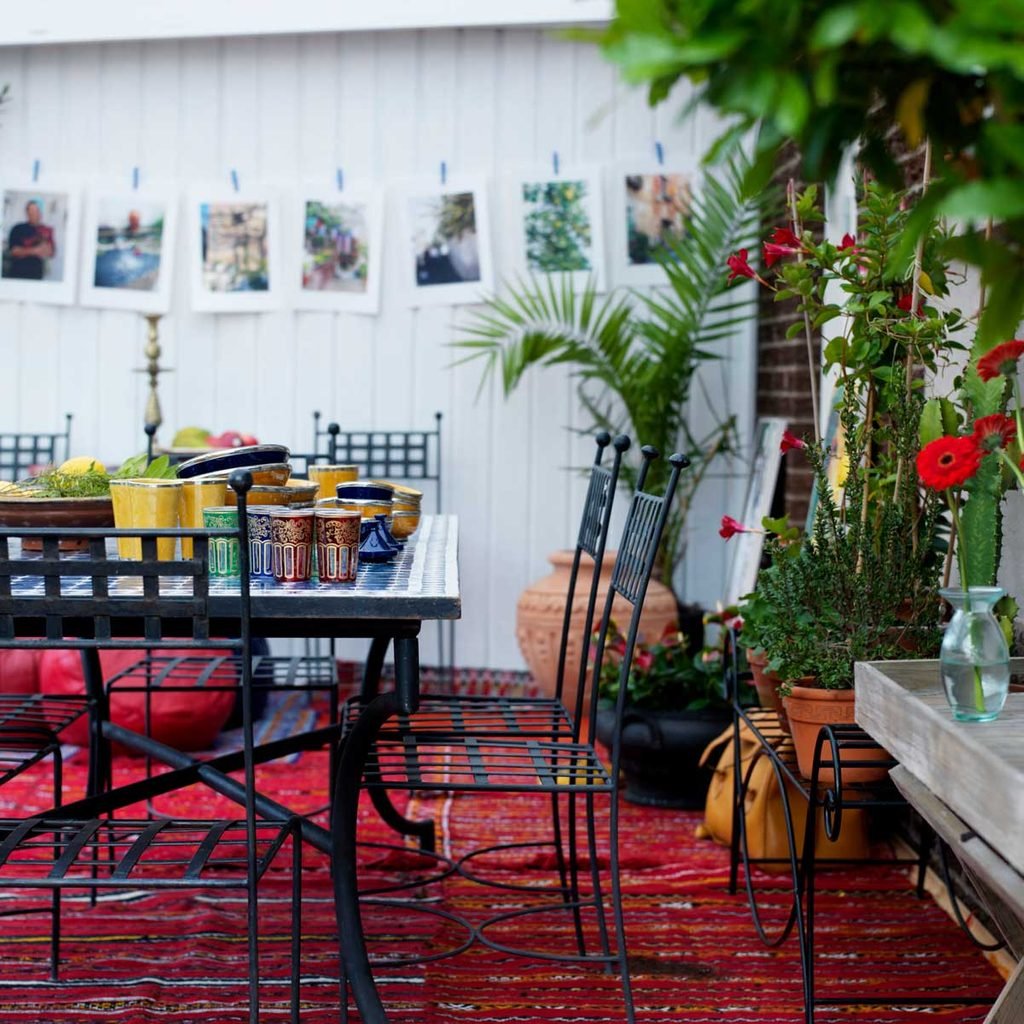Homeowner’s Guide to Outdoor Carpet
Updated: Jul. 05, 2023

Outdoor carpet can add inviting color and character to your patio or deck. Here's what you need to know about this outdoor living trend.
Our editors and experts handpick every product we feature. We may earn a commission from your purchases.
Long considered carpeting’s least attractive form, outdoor carpet has made great leaps forward in quality and style over the past few years. Durable and low-maintenance, this soft floor covering is an easy way to add a cozy feel to your patio or deck.
“Given that we will be spending more time in our homes for the foreseeable future, it’s important to truly use the space you have,” advises interior designer and HGTV host Arlene Gibbs. “An outdoor rug will help your outdoor spaces feel more like an extension of your home.”
If you’re considering outdoor carpet for your outdoor living space, here’s what you need to know:
On This Page
What To Know About Outdoor Carpet
Water-resistant and UV-stable, outdoor carpet is made with materials that can withstand anything Mother Nature throws at it. Its low-pile or densely woven synthetic or natural fibers help repel dirt and water and resist mold and mildew. However, “outdoor rugs made of natural fibers like seagrass are not as strong as their synthetic counterparts and could have issues with mold,” Gibbs says.
Psst! These are some of our favorite Amazon outdoor rugs that will bring your space to life.
Types of Outdoor Carpet
Most outdoor carpet is low-pile loop (or Berber carpet), cut and loop patterned or flat woven. All handle the wear and tear of weather and foot traffic better than plush or deep-pile carpet types. For completely exposed areas or high-humidity climates, choose a carpet with all-weather marine backing to resist moisture.
- Broadloom rolls: Purchase outdoor carpet in a wide broadloom roll to install as a wall-to-wall floor covering in an open or semi-enclosed outdoor living space. Carpet on broadloom rolls can also be cut to a custom size and finished around the edges for an area rug that fits your space.
- Tiles or planks: Outdoor carpet in tile or plank form rather than broadloom can also be installed wall-to-wall. You can also use a single piece or small grouping to cover a smaller area of your floor space, or create a rug-like centerpiece.
- Area rugs: Outdoor rugs have the same durability and water-resistance as outdoor carpet, but are smaller and designed as an accent rather than a full floor covering. “If you’re placing an outdoor area rug on your deck, you may want to move it around every so often so you don’t have uneven fading,” advises Gibbs.
Pros and Cons of Outdoor Carpet
“The pros of outdoor carpet far outweigh the cons in my book,” says Gibbs. Here are a few factors to consider if you’re thinking about buying outdoor carpet:
Pros
-
Resistant to the elements, sun, pets and people. Gibbs even suggests considering outdoor carpet as an indoor option “for high traffic areas in your home, like a den/family room, kids’ room, playroom, etc.”
-
Low maintenance and easy to clean.
-
Variety of colors, styles and sizes to fit the space and décor.
-
Price points for any budget.
-
Can protect your deck or patio from wear and tear.
Cons
-
Requires a special adhesive or double-sided tape for carpets or anti-slip underlay for area rugs.
-
Water-resistant but not waterproof, so it can have issues with mold or mildew in extremely damp climates.
-
Less plush than indoor carpets due to dirt- and moisture-blocking low pile or flat weave.
Installation Information
You can install outdoor carpet on any hard, flat surface from wood to concrete, although some surfaces may need weathering from 30 to 60 days first. The straightforward installation requires a few basic tools, a rented 100-lb. roller and special adhesive or double-sided carpet tape. An intermediate-level DIYer can do it in a day. Some plank carpets and carpet squares come with a self-adhesive backing, making them even easier to install.
Otherwise, consider that professional installation costs an average of $400 to $600 for a 300-sq.-ft. patio or deck.
Outdoor Carpet Maintenance
Little to no maintenance and easy carpet cleaning are two of the biggest selling points of outdoor carpeting. These carpets are resistant, but food and beverages often leave stains, so spot-clean larger spills immediately.
Set up grills or smokers away from the carpet as flying embers melt holes in the synthetic fibers. Standing water can damage even the most water-resistant carpets; use a push broom to remove puddles after a heavy rainfall.
Outdoor Carpet Cleaning
To clean, first go over your carpet with a broom to get rid of blown leaves, twigs or other large debris. Then vacuum using the regular floor head (not the rotating brush) to remove dirt and dust.
For mud or stains, mix dish detergent with lukewarm water. Scrub with a brush or push broom, then use a sponge or garden hose to rinse the suds. If you are cleaning an outdoor rug, hang it in the sun after a rainstorm or hose rinsing until fully dry.
